Howlite: features and properties of the stone
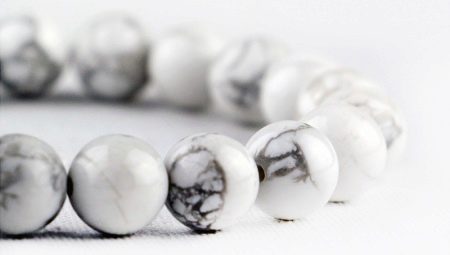
Howlite is a rather rare stone that is in demand. The stone received such an unusual name in honor of its discoverer, who became the geologist Henry Gova (Canada). This gem is endowed with many properties, including magical and healing, so interest in it does not diminish. It is worth considering in more detail the description of the stone, its properties, varieties, differences from a fake, as well as the features of storage and care.
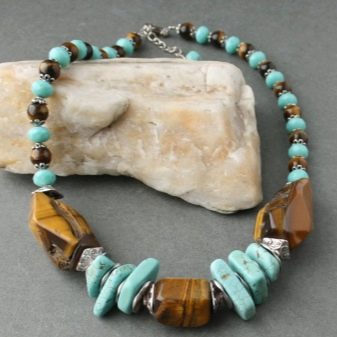
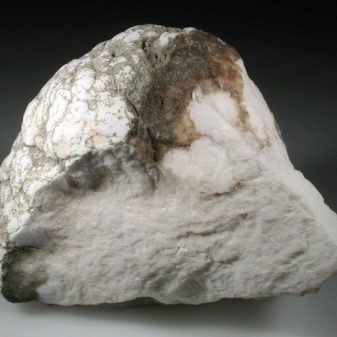
Description
Howlite is a type of calcium borosilicate. This gem also has such names as kaulite, taulite, turkvenite, pressed turquoise and so on. This stone is presented in nature in a rounded shape, has a light gray tint, while it has interspersed with a dark color. Since this shade does not attract much attention, the stone is often painted. Quite often there are blue gems. Due to this color, the stone is called pressed turquoise, although they have nothing in common. It happens that howlite is painted in green shades, sometimes even red stones are found.... This stone looks great in jewelry.
Howlite was discovered in 1868 thanks to the efforts of a famous geologist named Henry Gowa. A beautiful gem was discovered on the territory of the Scottish Peninsula. Of course, the stone was named after the scientist who found it, but there are also others mentioned above. In ancient times, this stone had a special meaning: it indicated the material well-being and nobility of its owner.
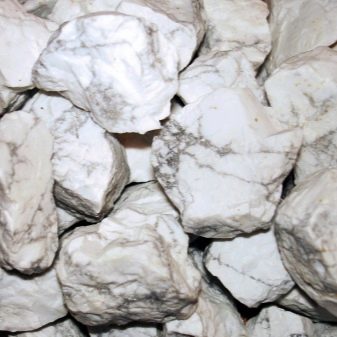
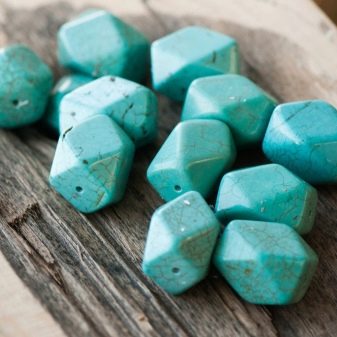
Today, this semi-precious mineral is often used to create cabochons or beads for necklaces.Today, even a poor person can afford such decoration. Howlite can be found as a decoration among the ministers of the church. For psychics and healers, this stone is a ritual attribute.
Howlite is mined in only a few countries, so it is considered a rather rare mineral. Boron and calcium are also found in the basins where howlite reserves are concentrated. This mineral is also found in the United States, namely in California and Canada. There are also small reserves of stone in Germany, as well as in Serbia. Howlite is often confused with other natural stones.
It differs from cacholong in that the surface is less dull, the veins are more precise, while cacholong has vague veins that form a cloudy dendritic pattern.
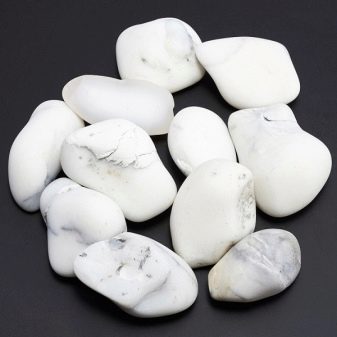

Varieties
Howlite looks inconspicuous at first glance. On sale there are pebbles of light brown, white and gray colors, while dark veins appear. Turkvenite is characterized by a porous structure and porcelain luster, so it is easy to stain. Quite often, the mineral is repainted in blue or blue-green tones, while it becomes very similar to turquoise, which belongs to expensive stones. Even experienced jewelers sometimes cannot distinguish it from Howlite.
The mineral is often colored in red shades, while it closely resembles coral. It does an excellent job of imitating various pebbles. Even an unpainted version is often passed off as white turquoise, which also costs a lot. Each option looks rich and sophisticated, so it can be quite difficult to draw a clear line between howlite and turquoise or coral.

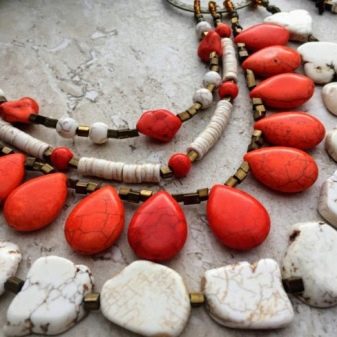
Properties
Howlite is a mineral that has many properties.
Physical and chemical
Howlite is characterized by its various shapes and sizes. The gem can be round, oval, flat. If we consider the color versions, then, as a rule, the mineral is presented in white with veined inclusions of a black or brownish tint. A small number of stones are translucent, but it is rather difficult to find them. Not everyone can appreciate the color white. Many consider it uninteresting and sad, therefore, quite often jewelers resort to changing the color of howlite. The mineral acquires red or green tones. It is the colored stones that have a higher price than their white counterparts.
The mineral is based on borosilicate calcium, as well as a small amount of potassium and sodium. It is considered to be a fragile stone. If we evaluate him for strength on a 10-point system, then he will take only third place. This mineral has a density of 2.5 to 2.6 g / cm³. The mineral can be easily dissolved in acid, so it is better not to experiment and avoid direct contact with various chemicals.
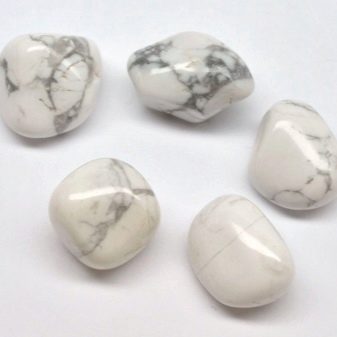
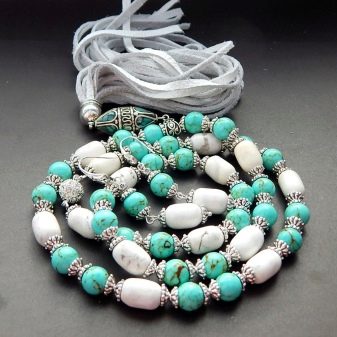
Therapeutic
The mineral is quite famous for its healing properties, because it contains calcium. Howlite semi-precious stone has the following qualities:
- allows you to get rid of pain in muscles, bones, joints;
- perfectly helps to forget about dental problems;
- provides the fastest healing in case of injuries, fractures, wounds;
- eliminates the lack of calcium and all possible consequences, therefore it is great for pregnant women;
- helps to eliminate various problems that relate to the heart, and also excellently strengthens the walls of blood vessels;
- acts as a prevention of depression and stress;
- allows you to calm down a person, bring his psychological state back to normal.


Magical
Howlite is a fairly well-known stone that is often used by magicians and sorcerers, because it has a wide spectrum of action. An interesting fact is that only white stones can be used during rituals. It is difficult to say why exactly the stones should be of this color.Perhaps, snow-white minerals are welcome, as they are the personification of innocence, sincerity and purity. Mages celebrate the power of this stone, since it helps prevent various cataclysms.
They are used by Howlite, as it has a positive effect on all people, without exception. This is as follows:
- clears the consciousness of a person;
- eliminates anxiety, excitement, anxiety;
- allows you to forget about aggression and fits of rage.


Howlite is often placed near the bed at night because it can remember dreams. After that, magicians and sorcerers use it in the interpretation of dreams, look at the future, make it better. Keep in mind that Howlite is well suited for students. It allows you to better memorize new information, contributes to better learning. Howlite can be simply put in your hand or pocket, or you can put it on yourself as a piece of jewelry.
Many go to exams with only this mineral. Howlite also brings help in serious interviews, because he will reveal you as an erudite, responsible, purposeful person.
If you practice meditation, howlite will become irreplaceable as well. They say that thanks to him, you can separate the spirit from the body.


Who is it suitable for?
Howlite is a semi-precious mineral characterized by purity and positive energy. But it cannot be said that it suits all signs of the zodiac, without exception. You should not wear it to people born under the constellation:
- Aries;
- Leo;
- Sagittarius.
If the above signs of the zodiac wear howlite, then it is possible that grief, depression, sadness will come into their lives, so it is better to refrain from it.
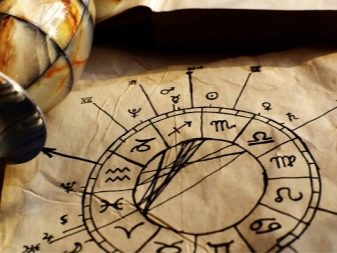

This stone is suitable for the representatives of the following signs:
- Capricorn;
- Taurus;
- Virgo;
- Scorpion.
Its presence will allow you to saturate life with energy. The stone will allow you to achieve all your goals. If we talk about the other signs of the zodiac, it is worth noting that he acts on them neutrally. Quite often, howlite is selected not by the zodiacal constellation, but by name. It is an ideal purchase for girls and women with the names Nina, Julia, Vera. If we consider the stronger sex, it is worth noting Dmitry, Elisha and Makar. The stone will decorate life, add fun and joy.


How to distinguish from a fake?
Howlite is quite often used to make counterfeits. Since it can be easily painted in different colors, charlatans pass it off as similar minerals: coral, turquoise. It is quite difficult even for specialists to distinguish blue-tinted howlite from turquoise. Outwardly, they are identical, but the composition, as well as physical and medicinal properties, respectively, differ.
But even an ordinary person can tell the difference between semi-precious Howlite and turquoise. To do this, you need to gently try to scrape off the paint with your finger. If you manage to scratch a pebble, then it's definitely not turquoise in front of you - they want to deceive you, pulling out of you much more money than the mineral actually costs. The downside is that not every person wants to ruin a newly purchased piece of jewelry, but no one will give you a chance to scratch the item on the showcase... It is worth being wary if there are large stones in front of you - real turquoise does not have such dimensions. In addition, howlite has a porcelain luster that is not inherent in turquoise. And one more hint: if you look at a stone with a magnifying glass, howlite will consist of small crystals, but turquoise will not.
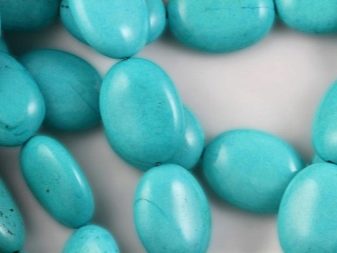
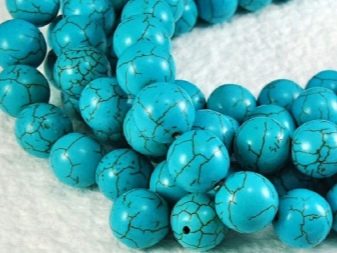
Storage and care
Howlite requires special care and storage in order to delight with its amazing appearance, brilliance and beauty. It is worth adhering to the following rules for the care and storage of howlite:
- jewelry should be washed quite carefully;
- for washing, you should use a soft brush and water with dissolved liquid soap;
- the mineral should be protected from various chemicals;
- it is worth protecting the stone from direct sunlight;
- it is better to store a pebble in a bag or a closed bag;
- the product can be cleaned with alcohol-free products;
- to preserve the shine of the mineral, it is worth cleaning no more than 1-2 times a month.
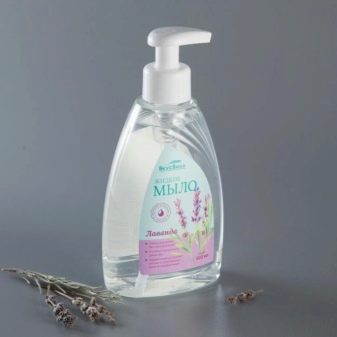
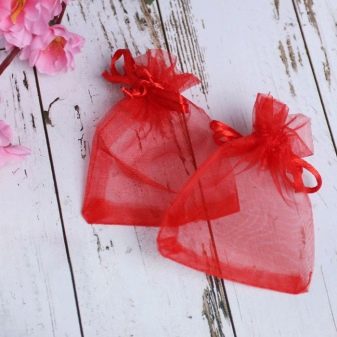
Howlite is an amazing semi-precious mineral created by nature itself. The pristine stone attracts attention with its sophistication and beauty. It is endowed with many wonderful properties, therefore it is used for various purposes.
In order for howlite to delight you and those around you, you should adhere to simple rules for the care and storage of the mineral.
See the next video for howlite features.








